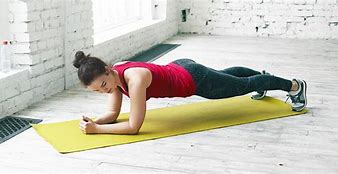Simple Steps to Begin Your Fitness Journey Safely and Effectively
Starting an exercise routine at home can be a game-changer for your health. It’s affordable, convenient, and easy to adapt to your schedule. But like any new habit, it needs to be done correctly to be sustainable and beneficial. This blog is a guide for people of all ages to understand the right way to start exercising at home. From beginners to seniors, these tips will help everyone get moving safely.
1. Start by Understanding Your Health Needs
Before beginning any workout plan, assessing your current health is important. This means listening to your body and, if necessary, consulting with a doctor, especially if you have any chronic conditions like diabetes, heart disease, or joint pain. According to the Mayo Clinic, it’s best to get a health check-up to know what your body can handle and to avoid risks or injuries while starting.
2. Set Clear and Realistic Goals
Having clear goals gives your workout plan direction. Don’t aim to lose 10 kilos in a week or run a marathon in a month. Instead, start with small, achievable goals like doing 10 minutes of walking every day or following a 15-minute stretching routine three times a week. Realistic goals help build confidence and reduce the chances of burnout or injury. As per the American Council on Exercise, setting “SMART” goals—Specific, Measurable, Achievable, Relevant, and Time-bound—can keep you motivated and focused [2].
3. Create a Simple Workout Plan
Once your goals are clear, plan your weekly workouts. A well-balanced plan should include:
- Cardio (like walking or dancing)
- Strength training (bodyweight exercises like squats or push-ups)
- Flexibility exercises (like stretching or yoga)
You don’t need fancy equipment to begin. Household items like water bottles can serve as weights. The CDC recommends at least 150 minutes of moderate aerobic activity per week, combined with muscle-strengthening exercises two days a week.
4. Start Slow and Progress Gradually
It’s tempting to go all in when motivation is high, but doing too much too soon can lead to injuries and soreness. Start with short, low-intensity workouts and increase the duration and intensity gradually. For example, begin with 10-minute sessions and build up to 30 minutes over a few weeks. This approach is supported by the American Heart Association, which emphasises consistency over intensity for beginners [4].
5. Make Use of Online Resources
One of the perks of exercising at home is the abundance of free workout videos online. Platforms like YouTube have thousands of beginner-friendly workouts, including yoga, aerobics, Zumba, and strength training. Channels like Fitness Blender, HASfit, and Yoga with Adriene are widely recommended for their safe, easy-to-follow routines for all fitness levels.
6. Choose a Comfortable Space at Home
Designate a small workout area that’s quiet, ventilated, and free of hazards. You don’t need much—just enough room to stretch your arms and legs comfortably. Using a yoga mat can add comfort and reduce strain on your joints, especially when doing floor exercises.
7. Wear Proper Clothing and Footwear
Even though you’re at home, it’s important to wear appropriate clothes and supportive shoes. Comfortable, breathable fabric helps keep your body cool, and shoes with a good grip protect your feet and joints. Avoid working out barefoot unless it’s for yoga or Pilates.
8. Involve Your Family
Exercising at home is more fun when done together. Invite your children, parents, or partner to join you. It not only makes the workout enjoyable but also promotes a healthy lifestyle for the whole family. Group workouts can help you stay consistent and accountable.
9. Listen to Your Body
Always pay attention to how your body feels during and after exercise. If you experience pain, dizziness, or extreme fatigue, stop immediately. Discomfort like muscle soreness is normal, but sharp or sudden pain is a warning sign. Modify movements as needed and never push through pain.
10. Stay Hydrated and Eat Well
A good workout plan must be supported by proper nutrition and hydration. Drink plenty of water before, during, and after your workouts. Eating a balanced diet rich in fruits, vegetables, proteins, and whole grains helps your body recover and grow stronger. The World Health Organisation advises limiting sugar and fat intake to maintain overall wellness.
11. Track Your Progress
Keep a simple journal or use a fitness app to record your activities, progress, and how you feel after each session. Tracking helps you stay motivated and shows how far you’ve come. Seeing results—even small ones—can be incredibly encouraging.
12. Stay Consistent and Patient
Results take time. The key is consistency. Don’t be discouraged if you don’t see immediate changes in your body. Exercise improves mood, sleep, and energy levels before physical changes become visible. According to Harvard Medical School, even moderate exercise can significantly reduce the risk of depression and anxiety.
The Best Way to Manage Idle Time
Conclusion
Exercising at home is a wonderful way to take charge of your health—no gym membership required. The most important thing is to start with what you have and build from there. By understanding your health, setting realistic goals, making a simple plan, starting slow, and being consistent, you’ll be on the right path to a healthier and more active life.
Remember, it’s not about being perfect—it’s about being persistent. Whether you’re 18 or 80, it’s never too late to begin your fitness journey from the comfort of your own home.
References
- Mayo Clinic. (2021). Fitness basics: Getting fit safely
- American Council on Exercise. (2020). How to Set SMART Fitness Goals
- Centres for Disease Control and Prevention. (2022). How Much Physical Activity Do Adults Need?
- American Heart Association. (2023). Recommendations for Physical Activity in Adults
- World Health Organisation. (2020). Healthy Diet Fact Sheet
- Harvard Medical School. (2021). Exercise is an all-natural treatment to fight depression

